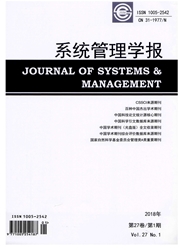

 中文摘要:
中文摘要:
双渠道供应链中电子直销渠道和传统零售渠道销售完全相同的产品,导致渠道冲突。为了缓解冲突,从渠道成员不同市场定位的角度,考虑在双渠道中分别销售异质产品、同时制造商利用电子渠道的资源优势为传统渠道提供服务努力。建立了一个能准确刻画异质产品不同功能属性、消费者不同偏好以及服务努力影响程度的效用模型,对比分析了集中式和分散式下的最优决策及利润。最后,提出了两部收费协调策略。研究结果表明,两部收费策略能够实现供应链的完美协调,并且消费者对产品差异性的偏好越大,达到协调时的批发价越高,协调后系统增加的利润越多。
 英文摘要:
英文摘要:
In dual-channel supply chain, the homogeneous products are sold through electronic direct channel and traditional retail channel, and this cause channel conflict. To reduce the conflict, it may good to sell heterogeneous products through the two channels in terms of market positioning. At the same time, the manufacturer provides service for traditional retail channel by taking advantage of electronic direct channel. A utility model that can depict the different functional properties of heterogeneous products, different consumer preference and effect of service is built. Optimal decisions and maximum profits in centralized decision and decentralized decision are analyzed and compared. The two-part tariff strategy is put forward. The research shows that two-part tariff strategy coordinates the supply chain perfectly, and the more consumers prefer the difference of products, the bigger wholesale price and increased profits is achieved.
 同期刊论文项目
同期刊论文项目
 同项目期刊论文
同项目期刊论文
 期刊信息
期刊信息
